Heart Nebula Narrowband
Click images above for full size versions
October 5, 2025
The Heart Nebula is a large complex cloud of glowing gas in Cassiopeia. It is catalogued as IC 1805 and Sh2-190. The so-called Fishhead Nebula (IC 1795 or NGC 896) is at the bottom just right of centre. The Heart Nebula lies near the Soul Nebula (IC 1848). Both are about 7,500 light years away and are located in the Perseus arm of the Milky Way galaxy. I’ve never captured this entire object in a narrowband colour palette, so this was a fun data set to process.
For this object, I opted for two different narrowband palettes: the Hubble palette and the Foraxx palette. The two images above were made with the same data, and I hope you enjoy them both.
Tekkies:
Acquisition, focusing, and control of Paramount MX mount and other equipment with N.I.N.A. and TheSkyX. Unguided. Focus with Primalucelab Sesto Senso 3 on the Sky-Watcher stock focuser. Equipment control with Primalucelab Eagle 4 Pro computer. All pre-processing and processing in PixInsight. Acquired from my SkyShed in Guelph. Acquired under average transparency and seeing and moderate to strong moonlight from September 8 to 19, 2025.
Sky-Watcher Esprit 70 EDX refractor, QHY367C Pro camera.
L-Synergy Filter: 264 x 5m = 22hr 00m
L-eXtreme Filter: 223 x 5m = 18hr 35m
Total: 40hr 35m
Preprocessing: The WeightedBatchPreProcessing script was used to perform calibration, cosmetic correction, weighting, registration, local normalization, integration and Drizzle integration of all frames (Fast Drizzle, Scale=2x, Drop Shrink=0.9).
Gradient Removal: DynamicBackgroundExtraction was applied to the two masters (L-Synergy = SOO; L-eXtreme = HOO).
SHO Master Creation: The DBExtract script was use to create S, H and O masters from HOO and SOO. The S, H, and O were combined using ChannelCombination with S assigned to red, H to green and O to blue.
Deconvolution: BlurXterminator was applied to the SHO image using an automatic PSF, star sharpening set to 0.50, and non-stellar sharpening set to 0.9.
Linear Noise Reduction: NoiseXterminator was applied with Amount=0.95 and Detail=0.5
Stretching: HistogramTransformation was applied to make a pleasing yet bright image. Approximate background level after stretch was 0.10
Nonlinear Processing
Star Removal: StarXterminator was used to remove the stars, with Unscreen selected.
Nonlinear Noise Reduction: NoiseXterminator was applied with Amount=0.9 and Detail=0.25
Contrast Enhancement: HistogramTransformation was used to adjust brightness and black point. LocalHistogramEqualization was applied twice. A Contrast Limit of 1.5 and 1 iteration was used for each LHE application (scale 40, strength 0.25; scale 150, strength 0.28). ExponentialTransformation was applied.
Sharpening: A mask that selected just the brightest parts of the nebula was used with MultiscaleMedianTransform to sharpen Layers 2 – 5 with strengths of 0.03, 0.03, 0.03, and 0.02, respectively.
Foraxx Palette Image Creation: The S, H and O channels were extracted from the SHO starless image and combined using the Foraxx Palette Utility script.
Contrast, Brightness and Colour Adjustment: Brightness, contrast, hue, and saturation of both images were adjusted in several iterations using CurvesTransformation and ExponentialTransformation, with masks as required.
Star-only Processing: Magenta stars were corrected in three steps. 1) The stars-only image was inverted. 2) SCNR was applied. 3) The image was inverted back to its original state. The lightness was extracted from the stars-only image and used to make a mask. Colour in the stars was boosted through the mask with two applications of CurvesTransformation’s Saturation tool. Star sizes were increased slightly with CurvesTransformation.
Star Restoration: PixelMath was used to insert the stars back into both starless images using the following expression:
combine(starless, stars, op_screen())
Final Steps: Background, nebula and star brightness, contrast and saturation were adjusted in several iterations using CurvesTransformation with masks as required. ICCProfileTransformation (sRGB IEC61966-2.1; Relative Colorimetric with black point compensation) was applied prior to saving as a jpg. The finder chart was made using the FindingChart process.

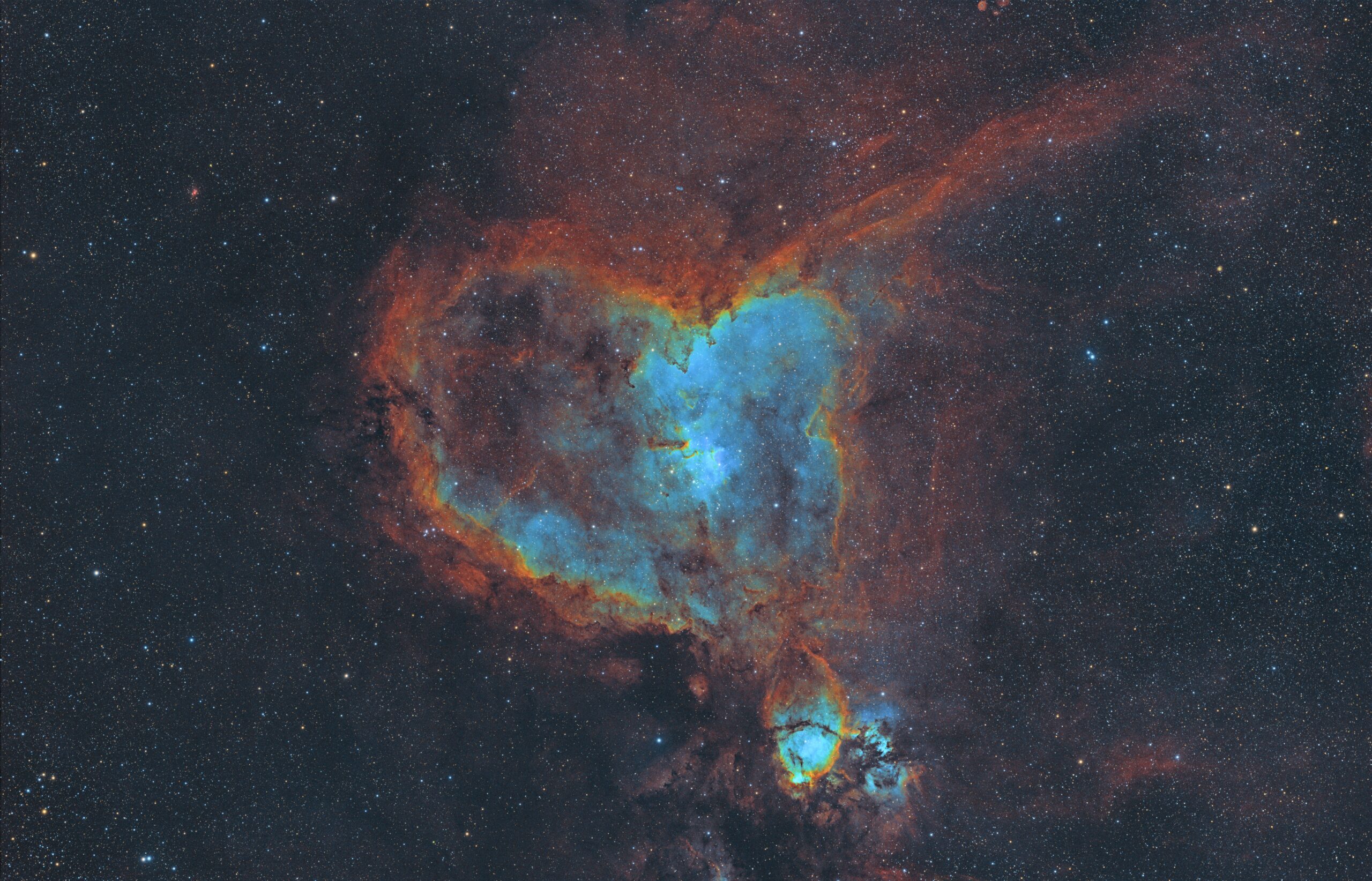
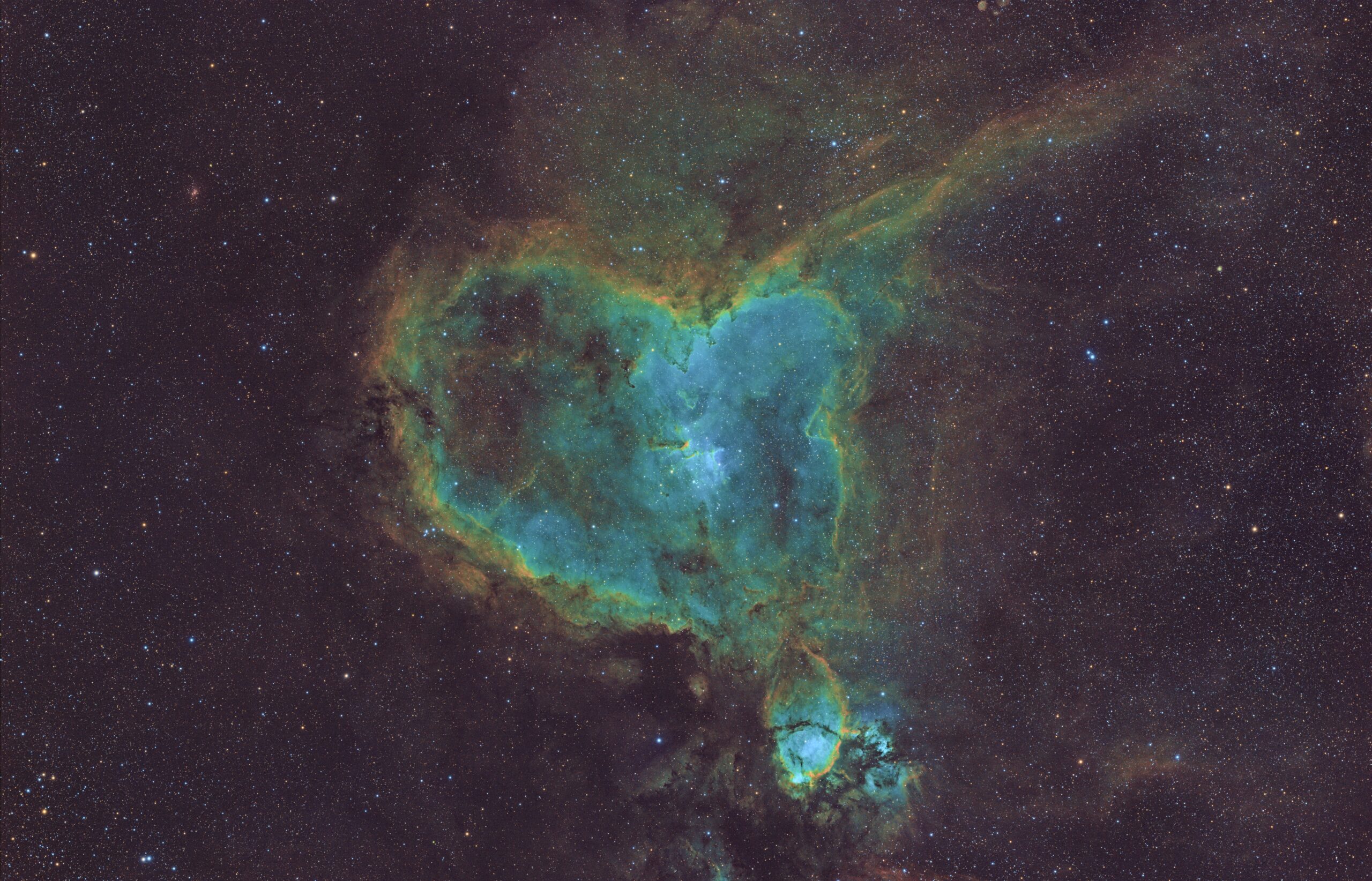
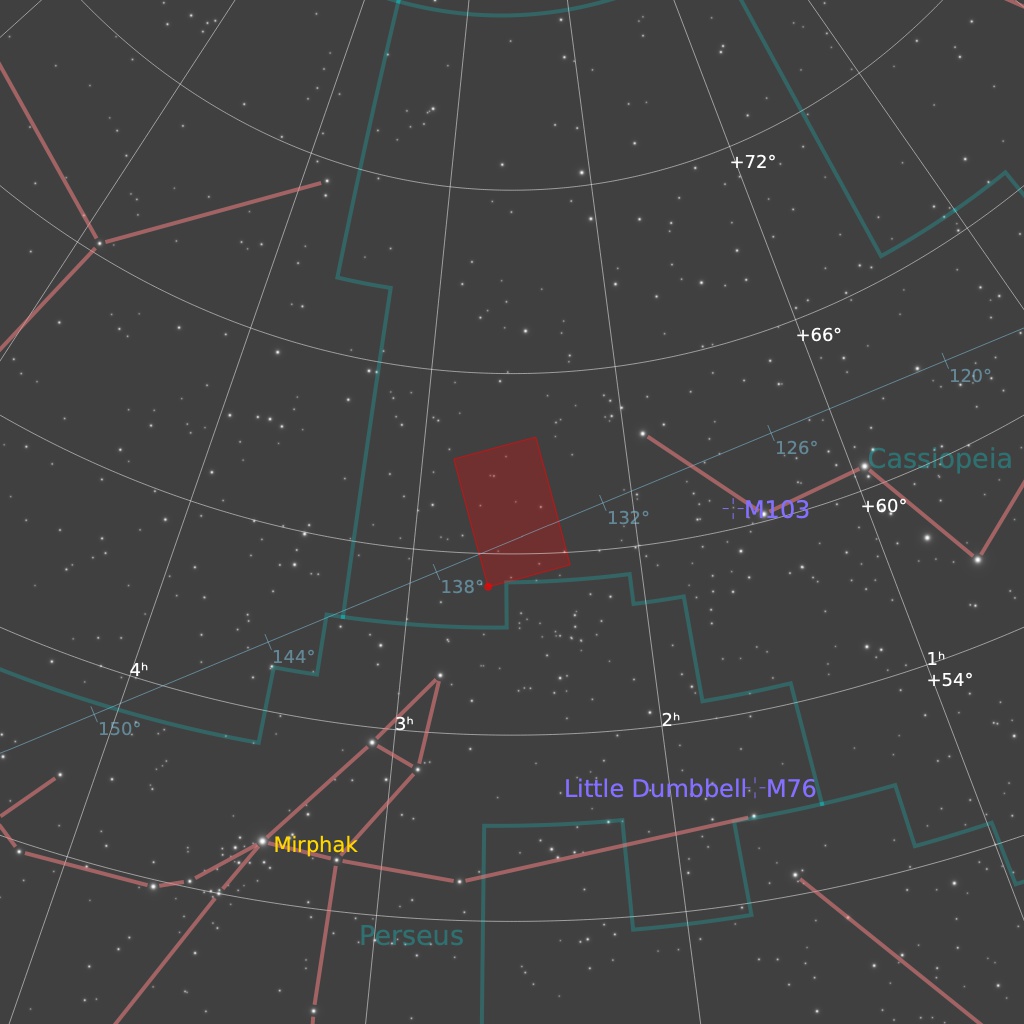
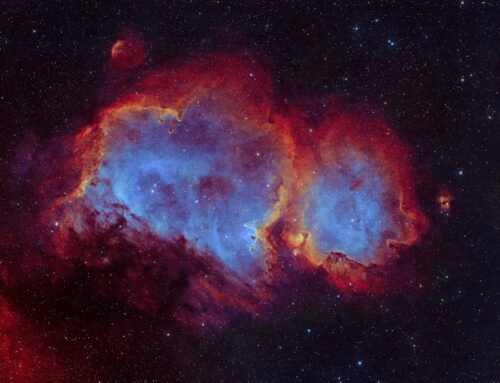

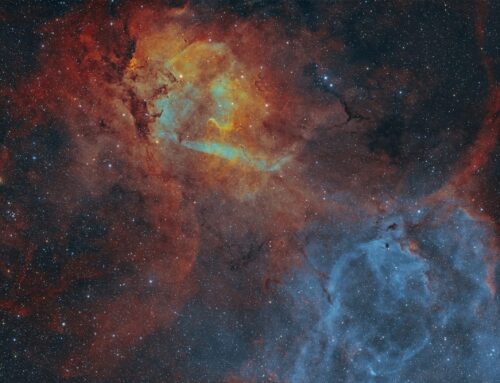
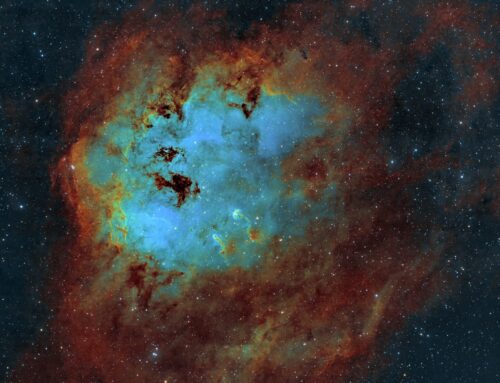
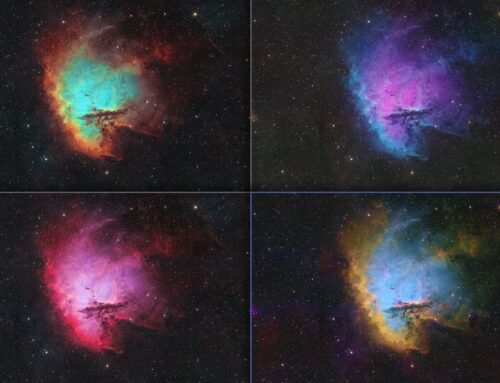
Leave A Comment